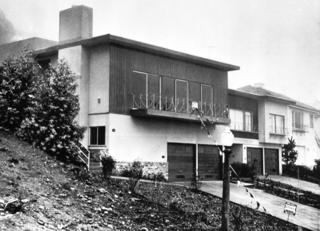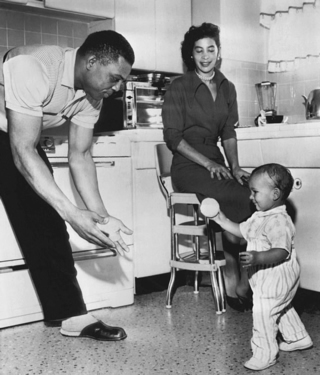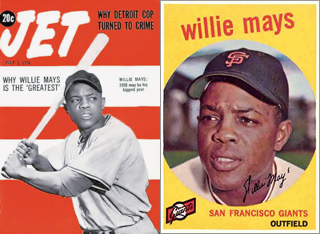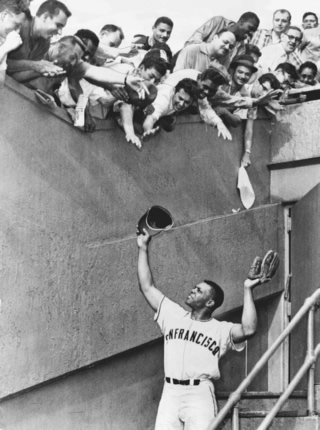Fielder's Choice - Page 2
 |
 |
|
|
Walter A. Gnesdiloff, who built the house and originally took Marghuerite's $100, did not conceal the reason for his abrupt change of mind. The woman next door objected to Negroes for neighbors, and two other small-time homebuilders who built in the area vowed they would destroy Gnesdiloff's business if he sold to Mays.
Besides building homes on his own, Gnesdiloff worked for both of the neighborhood builders. "I'd never get another job if I sold this house to that baseball player. I feel sorry for him and, if the neighbors said it was OK, I would do it," he told the San Francisco Chronicle.
One of the builders who pressured Gnesdiloff to drop the sale was straightforward in his racist views.
"I happen to have quite a few pieces of property in that area, and I stand to lose a lot if colored people move in," said Martin Gaehwiler, who sometimes employed Gnesdiloff. "I certainly wouldn't like to have a colored family near me."
What began as a realty dispute hit papers and TV stations nationwide, as the Mayses and a supporter, San Francisco civil rights leader Edward Howden, took on San Francisco's bigoted real estate establishment.
"Down in Alabama, where we come from," Marghuerite told the press, "you know your place, and that's something, at least. But up here, it's all a lot of camouflage. They grin in your face, and then deceive you."
Willie, who remained patient throughout the ordeal, said, "This sort of thing makes us look bad in the eyes of the world. I would like to think, as a colored boy, that you could buy and live where you want."
City officials, including some who had recently fought to attract the Giants to town and pushed for a new home for them at Candlestick Park, stepped in.
But to what end? Mayor George Christopher, who would throw out the first pitch during the Giants' 1958 opening game only a few months later, offered to put Willie and Marghuerite up at his own house while they looked for a home—somewhere else in town.
 |
 |
|
|
No thanks, they said, as they continued to live with Marghuerite's cousin.
Christopher tried his best to salvage the city's reputation, and did point out one important legal truth: "San Francisco is a very understanding city, and it's not our practice to preclude anyone from living where he wants to, regardless of his race. On the other hand, no law requires an owner to dispose of his property."
Then, a mystery figure stepped in. According to James S. Hirsch, author of Willie Mays: The Life, the Legend, "a large developer" called Marghuerite, offering to sell her a home—or to make things right for Gnesdiloff, should he change his mind and let them buy, by offering him work afterwards.
Who could this have been? How many developers were selling to African Americans at that time? Not many. But Joe Eichler was.
In any case, Willie and Marghuerite did not accept the developer's offer. They didn't have to. Howden, the civil rights leader, leaned heavily on Gnesdiloff, pleading, providing studies that showed that selling to black people did not hurt property values. Howden arranged a meeting between Gnesdiloff and Gaehwiler that ended with Gaehwiler shouting threats.
The next day, Gnesdiloff did the right thing. "The people of San Francisco want him to live here, so we decided to let him have it," he told the press.
"Man," Mays said, "I'm glad this is over. I sure didn't want any trouble in the first place." The Mayses moved in in January 1958.




